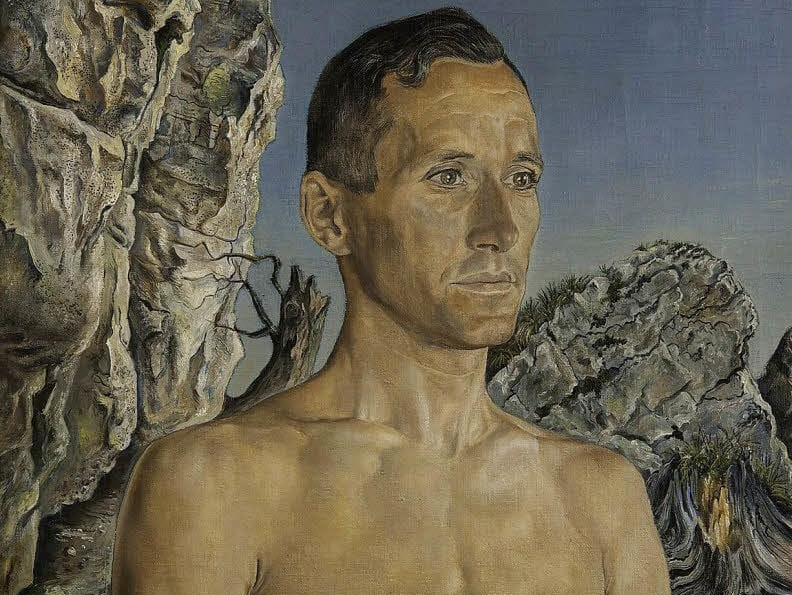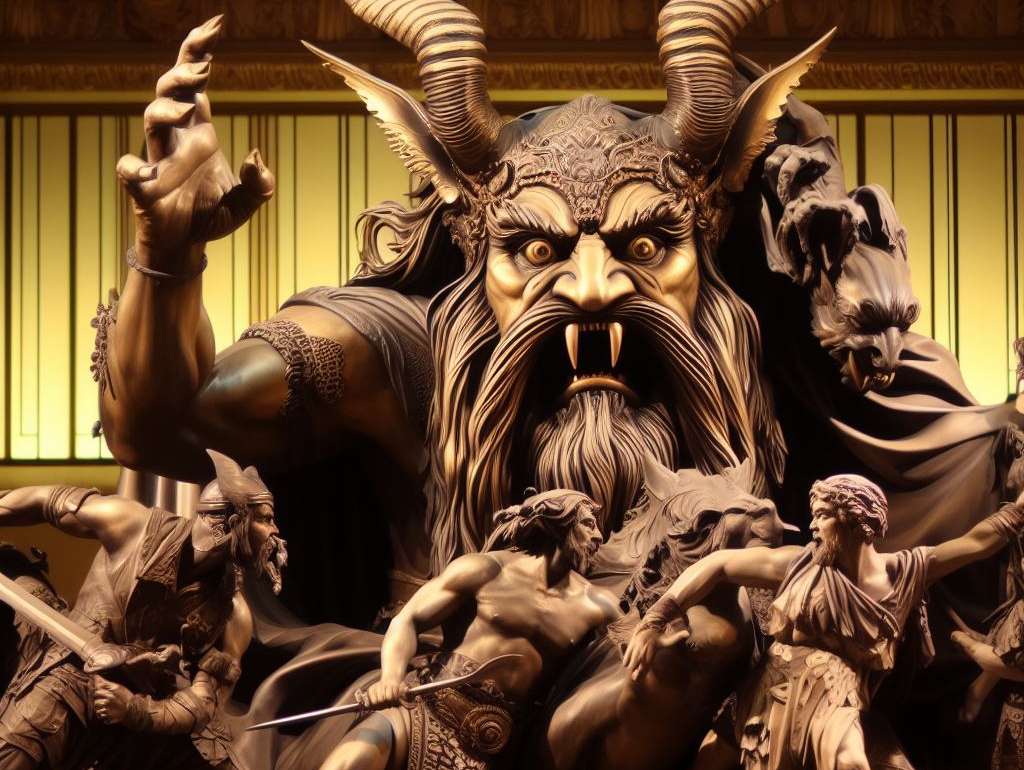Released in 1972, Aguirre, Wrath of God (“Aguirre, der Zorn Gottes”) was directed by the renowned German filmmaker Werner Herzog. This visually stunning and psychologically intense film is set in the uncharted Amazon rainforest of the 16th century. The story follows Spanish conquistadors searching for the legendary city of El Dorado.
The expedition party includes Don Lope de Aguirre, a volatile and power-hungry conquistador played magnificently by Klaus Kinski. As the expedition descends into chaos and madness, Herzog explores themes of obsession, power, and the destructive forces of nature. With its haunting cinematography, hypnotic music by Popol Vuh, and unforgettable performances, Aguirre, Wrath of God remains a timeless exploration of the human condition.
Descending into the unknown
The film begins with a visually striking sequence as the audience is introduced to the ill-fated Spanish expedition party. Led by Aguirre, they finds themselves at the precipice of a treacherous mountain path, which was shot on the stone stairway of the Huayna Picchu in Peru. The perilous descent immediately establishes the sense of danger that permeates the entire film. The nervous reactions to the cast as they make the descent appear entirely natural. Herzog is known to create unique environments and situations that elicit genuine reactions from his actors. His willingness to push the boundaries often results in capturing authentic moments on film. The actors, including Klaus Kinski, were reportedly not informed about the safety measures in place or the exact path they were supposed to take for the opening shots.
Herzog’s masterful direction is evident in the opening sequence. The camera skillfully captures the precariousness of the situation, the vastness of the surrounding landscape, and the unwavering determination etched on the faces of the explorers. With sweeping panoramic shots, haunting music, and a precipitous descent, the film immediately immerses viewers from the first frame of the film. This remarkable beginning not only establishes the tone of the film but also portends the grueling physical and psychological challenges the characters will encounter as they delve deeper into the rainforest.
Herzog and Kinski | An explosive collaboration
Herzog and Kinski worked together on several films, including Aguirre, the Wrath of God, Fitzcarraldo and Nosferatu the Vampyre, among others. Their partnership was marked by a unique blend of artistic brilliance, mutual admiration, and intense conflicts. Their relationship was notorious for its turbulent dynamics. The two clashed frequently, both on and off set. Stories of Kinski's explosive temperament and Herzog's unwavering determination have become part of cinema lore.
Searching for El Dorado
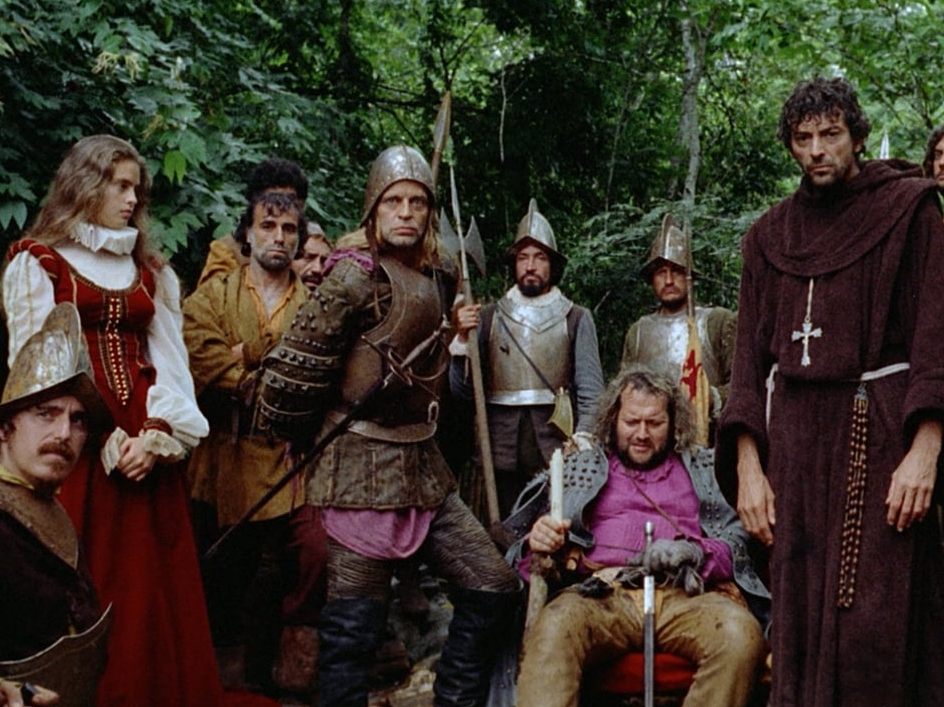
The story of the expedition begins on Christmas Day, 1560, when a group of Spanish conquistadors, accompanied by native slaves, embark on their search for El Dorado. Led by Gonzalo Pizarro, the journey is fraught with difficulties, and their supplies dwindle rapidly.
Pizarro orders a scouting party of forty men to go ahead by raft down the river, commanded by Don Pedro de Ursúa, with the mandate to return within one week or be considered lost. Among the party are Don Lope de Aguirre as second-in-command, Spanish nobleman Don Fernando de Guzmán, the devout Brother Gaspar de Carvajal, and Ursúa’s beautiful mistress, Doña Inés, as well as Aguirre’s innocent teenage daughter, Flores.
As the rafts navigate treacherous rapids, one becomes trapped in an eddy and cannot be freed. Following mysterious gunfire in the night, the men on board the trapped raft are found dead or missing the following day. Ursúa wants to bury the bodies, but Aguirre fires a cannon on the raft to prevent this and any impediment to the progress of the expedition.
After the remaining rafts are swept further down the river, time has run out for the doomed scouting mission. Ursúa decides to return to Pizarro’s group. However, Aguirre, driven by his growing obsession and a belief in the untold riches of El Dorado, leads a mutiny against Ursúa.
Ursúa orders Aguirre’s arrest, but he and a loyal soldier are shot. Ursúa is sentenced to death in a farcical show trial. Aguirre, who is now in charge, nominates Guzmán as the titular commander. In a rejection of the Spanish Crown that Guzmán represents, Aguirre proclaims Guzmán the Emperor of El Dorado. To the surprise of Aguirre, Emperor Guzmán grants clemency to Ursúa
As the expedition continues on a single, refashioned raft, desperation sets in. The men starve while Guzmán indulges in the limited food supplies. Guzmán meets a mysterious death near the raft’s toilet, and Aguirre finally takes charge, proclaiming himself the true leader.
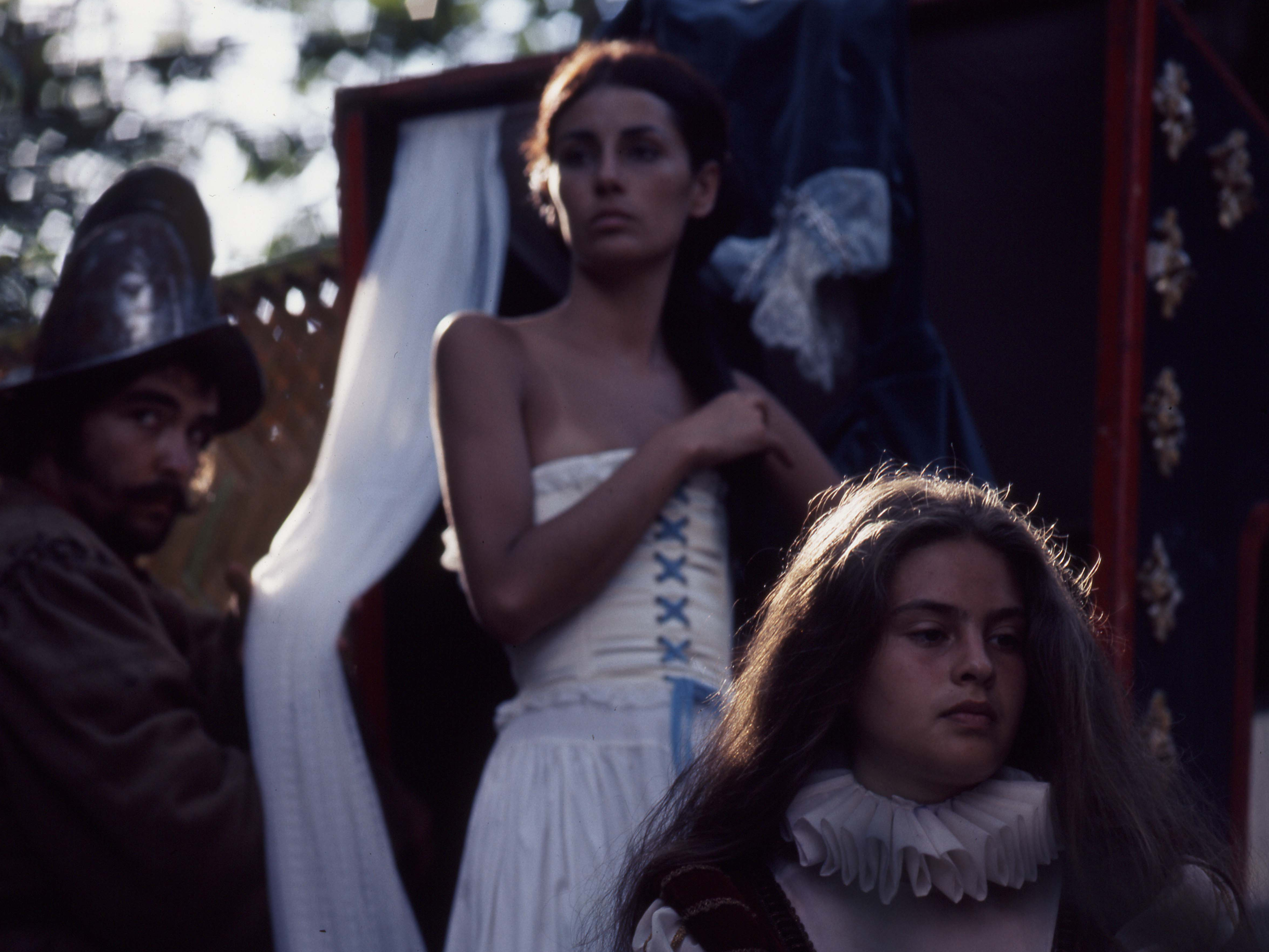
Aguirre’s obsession with finding El Dorado grows, and his grip on reality begins to crumble. The journey takes a darker turn as the group encounters an indigenous village, resulting in several soldiers being killed. Inés, distraught by the violence and chaos, walks without a word into the jungle and disappears. On the raft again, the surviving men, slowly succumbing to starvation and fever, begin to question reality and doubt what they see. In a series of final attacks by unseen assailants from the banks of the river, the remaining survivors, including Aguirre’s daughter, are killed by arrows.
As the film reaches its climax, Aguirre finds himself alone on the slowly moving raft, which is completely overrun with monkeys. This final scene reveals Aguirre’s unraveled psyche and isolation from reality. Aguirre’s delusions of grandeur have now consumed him entirely. He envisions himself as a conquering figure, imagining a vast empire and a dynasty to rule over America. However, the monkeys surrounding him are a stark reminder of the fleeting nature of power and the insignificance of human ambition in the face of the chaotic and uncontrollable forces of nature.
The overwhelming presence of the monkeys on the raft suggests the triumph of nature over human folly and arrogance. Here we might see similarities between the ending of Aguirre, Wrath of God and the poem “Ozymandias” by Percy Bysshe Shelley. Both explore themes of human ambition, the transience of power, and the inevitable decline of empires (real or imagined).
In “Ozymandias,” the speaker encounters a shattered statue of a once-mighty ruler, the remnants of a vast empire that has crumbled into ruins. The inscription on the statue, “Look on my works, ye Mighty, and despair”, serves as a poignant reminder of the impermanence of human achievements. Similarly, in the ending of “Aguirre, the Wrath of God,” Aguirre’s isolation amidst the indifferent monkeys on the raft echo this theme of transience, hubris, and the fragility and inherent limitations of human achievements.
Wrath of God?
Does Aguirre embody the destructive and vengeful nature of divine retribution? His relentless pursuit of power, disregard for moral boundaries, and ultimate descent into madness might be seen as a manifestation of divine wrath unleashed upon the world. On the other hand, an argument could be made that the wrath of God is actually inflicted upon Aguirre and the expedition as punishment for their arrogant quest for wealth.
The scene where an indigenous couple approaches the raft might offer a clue in this context. Approaching peacefully and posing no threat, they are met with hostility and suspicion from the explorers. Brother Carvajal, as religious authority, interprets their confusion when presented with a Bible as blasphemy. Carvajal kills the couple, viewing their inability to comprehend the foreign religious text as a threat to his own beliefs. Harmony with the divine and natural world is disrupted by this brutality.
The slaying of the natives can be seen as a pivotal moment in the film where the wrath of God begins to descend upon the explorers. It marks a turning point in their journey, signaling the moral and spiritual decline of the expedition and foreshadowing the dire consequences that await them. From this moment on, the explorers become increasingly trapped in a cycle of self-destruction and moral decay. Their actions, driven by greed, power, and a sense of superiority, incur the wrath of God in the form of their own unraveling and the chaos that befalls them.
The real Lope de Aguirre
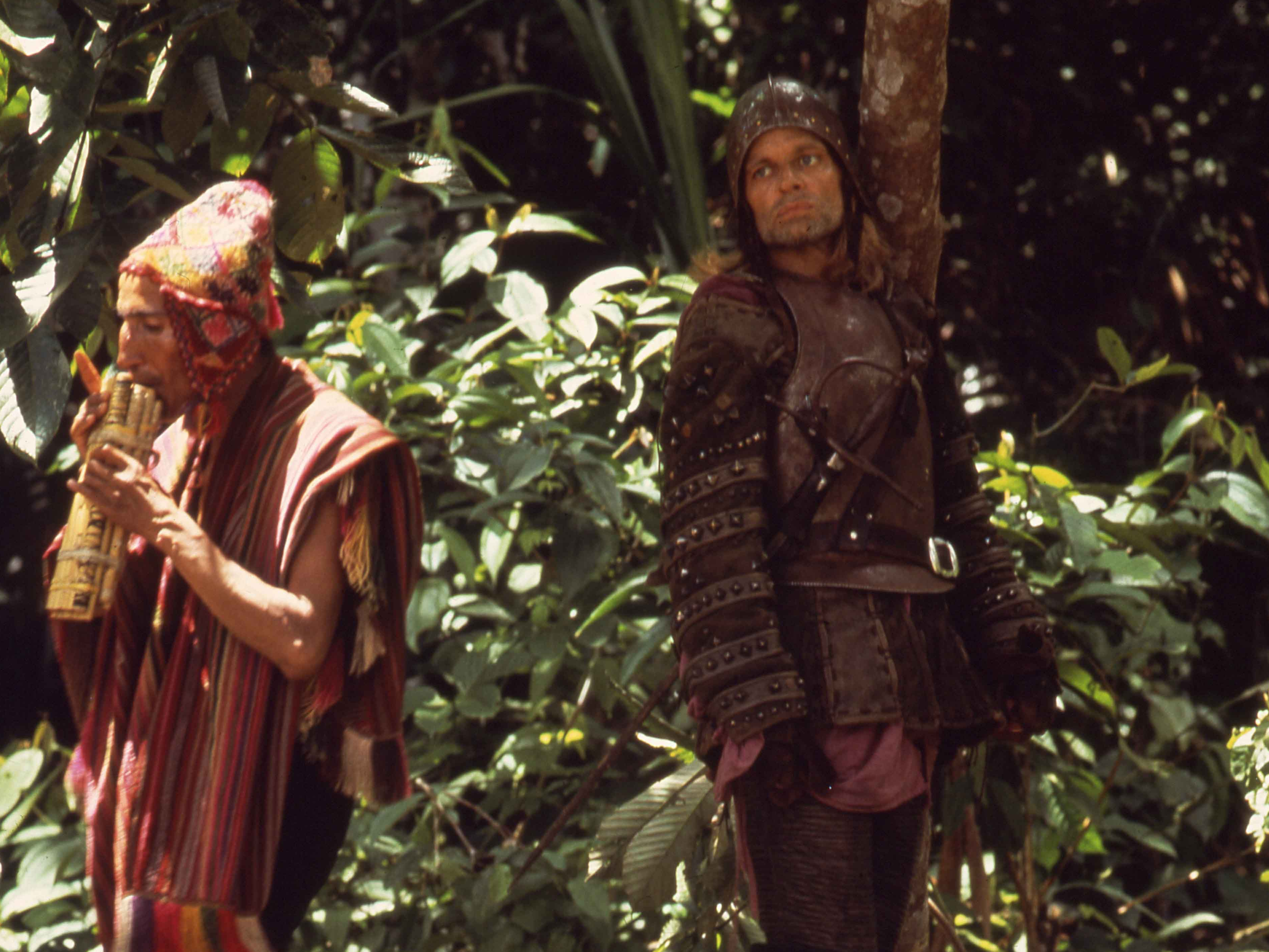
The actual Lope de Aguirre, also known as El Loco (“The Madman”), was born in 1510 in the Basque region of Spain. Aguirre arrived in the New World as a conquistador and participated in expeditions in search of riches and territories. He was known for his bravery, military skills, and ambition.
In 1560, Aguirre joined the expedition led by Pedro de Ursúa to find the legendary city of El Dorado in the Amazon rainforest. In 1561, he lead the infamous mutiny against Ursúa and killed him. He also rebelled against the Spanish Crown and proclaimed Don Fernando de Guzmán as the emperor of El Dorado, ultimately killing him too. But Aguirre did not meet his end adrift on a raft as shown in the film. After the rebellion, the Spanish authorities pursued him to bring him to justice for his acts of treason and insurrection. In the same year as the rebellion, Aguirre was captured in what is now present-day Venezuela. He was brought back to the Spanish settlement of Barquisimeto, where he faced trial for his crimes. Aguirre was found guilty of treason, murder, and rebellion against the Spanish Crown and sentenced to death.
Historical records about Aguirre’s life are limited, and some details may be subject to interpretation or speculation. Nevertheless, his story tells us something about the consequences of his self-destructive ambition and the mentality of the conquistador.
House of Habsburg | Power and influence in the Spanish Empire
Spain was part of the Habsburg Empire during the time of Lope de Aguirre. The Habsburg Empire, also known as the Spanish Empire, Catholic Monarchy, or the Spanish Monarchy, was a vast dominion that encompassed territories across Europe, the Americas, Africa, and Asia. The Spanish Empire, during its peak in the 16th century, was the third largest empire in history, with the British Empire being the largest and the Mongol Empire between them. At the time of Aguirre's expeditions in the mid-16th century, the Spanish Habsburgs held significant power and influence. They were known for their expansionist policies, exploration, and colonization efforts. During the Habsburg dynasty's reign, Spain experienced both periods of great wealth and power, as well as economic and political challenges. The Habsburgs played a pivotal role in shaping Spain's colonial ventures and engaging in conflicts and rivalries with other European powers.
Creating loyal Spanish subjects by erasing identity
The Spanish Crown, as well as the Catholic Church, played a significant role in shaping the colonial policies of South America at the time. They sought to assimilate and convert indigenous peoples to Catholicism, while also establishing a loyal and stable population in their newly conquered territories. One way they sought to achieve this was by interbreeding between Spanish colonizers and the indigenous population. The policy of encouraging intermarriage between Spanish settlers and indigenous individuals served a number of purposes. It aimed to promote cultural assimilation, establish social ties between the Spanish and indigenous communities, and create a mixed-race population or “mestizos.” The hope was that a mixed-race population would be more loyal to the Spanish Crown, which would help maintain control over the colonies.
Richard von Coudenhove-Kalergi was an Austrian-Japanese politician and philosopher. Some believe that Coudenhove-Kalergi proposed a similar plan to create a homogeneous, mixed-race population in Europe with the intention of undermining national identities.
In the context of Spanish colonialism in South America, a system of social categorization known as “casta” emerged. The casta system was a hierarchical classification of racial and ethnic groups based on ancestry and racial mixing. It aimed to categorize and define the various racial and ethnic groups resulting from intermarriage between Spanish colonizers, indigenous populations, and African slaves.
The casta system classified individuals into specific categories based on their racial heritage and ancestry, using terms such as mestizo, mulatto, criollo, zambo, and many others. Each category denoted a particular combination of racial and ethnic backgrounds.
Here are a few examples of casta categories:
- Mestizo: A person of mixed Spanish and indigenous ancestry
- Mulatto: A person of mixed Spanish and African ancestry
- Criollo: A person of pure Spanish descent, born in the Americas
- Zambo: A person of mixed indigenous and African ancestry
- Castizo: A person of predominantly Spanish ancestry with a small degree of indigenous or African heritage
Within the casta system, the groups with a higher proportion of European ancestry generally enjoyed more privileges and held higher social status compared to those with a higher proportion of indigenous or African ancestry. The historical legacy of the casta system has had lasting effects on social dynamics and inequalities, which you still see today in many Latin American countries.
In contrast, the British Empire’s colonial policies were the reverse of the Spanish approach, particularly in places like North America and Australia. The British Empire’s approach was more focused on establishing colonies as extensions of British society, with British legal and administrative systems, economic structures, and cultural norms. British settlers tended to build their own self-contained communities that did not seek integration or intermixing with the indigenous populations.
Herzog’s cinematic mastery
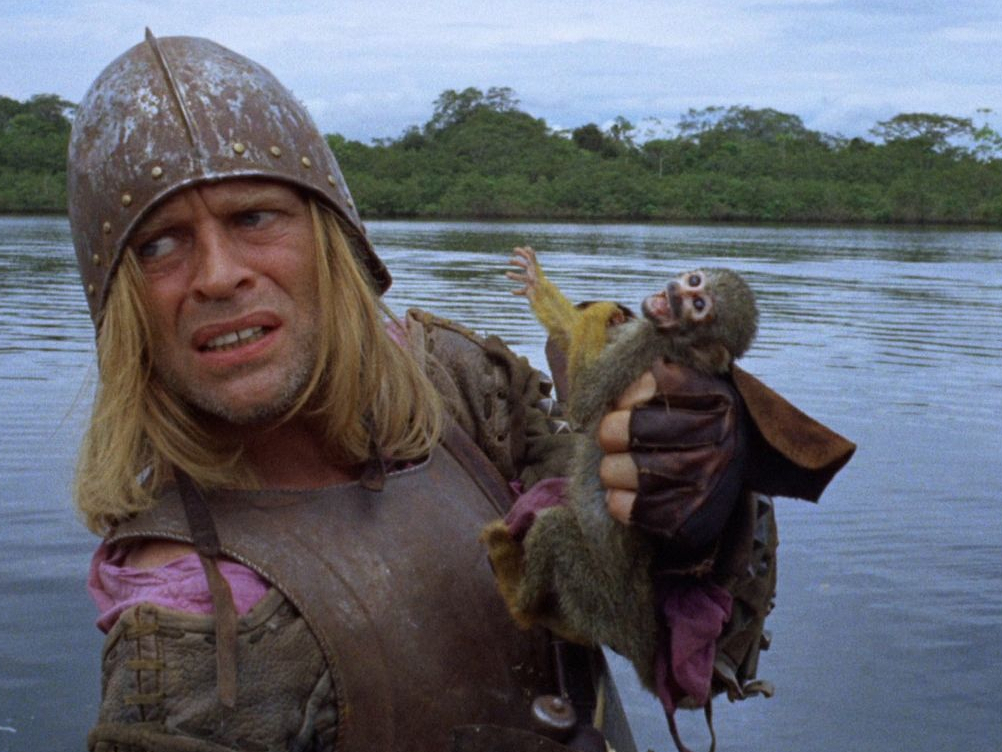
Aguirre, Wrath of God stands as a testament to Herzog’s unyielding commitment to pushing the boundaries of cinematic storytelling. With his meticulous attention to detail, Herzog captures the captivating duality of the rainforest, both in its breathtaking beauty and unforgiving brutality.
Through a blend of scripted scenes and unscripted moments, Herzog achieves a raw and immediate quality, immersing the audience in the harrowing journey of the expedition. The carefully curated musical choices, including the ethereal compositions of Popol Vuh, add a dimension of spirituality and introspection to the film’s narrative.
As the expedition’s situation deteriorates, Herzog’s masterful use of cinematography heightens the tension and foreboding atmosphere. The rainforest, once a vast and awe-inspiring backdrop, becomes a suffocating and oppressive presence, enveloping the characters and accentuating their folly.
Central to the film’s impact is the captivating collaboration between Herzog and Klaus Kinski. In the powerful conclusion, Lope de Aguirre’s Faustian ambition and obsessive madness are brought to life through Kinski’s riveting performance. Aguirre serves as a cautionary figure, a stark reminder of the perils that come with the relentless pursuit of an impossible dream.

